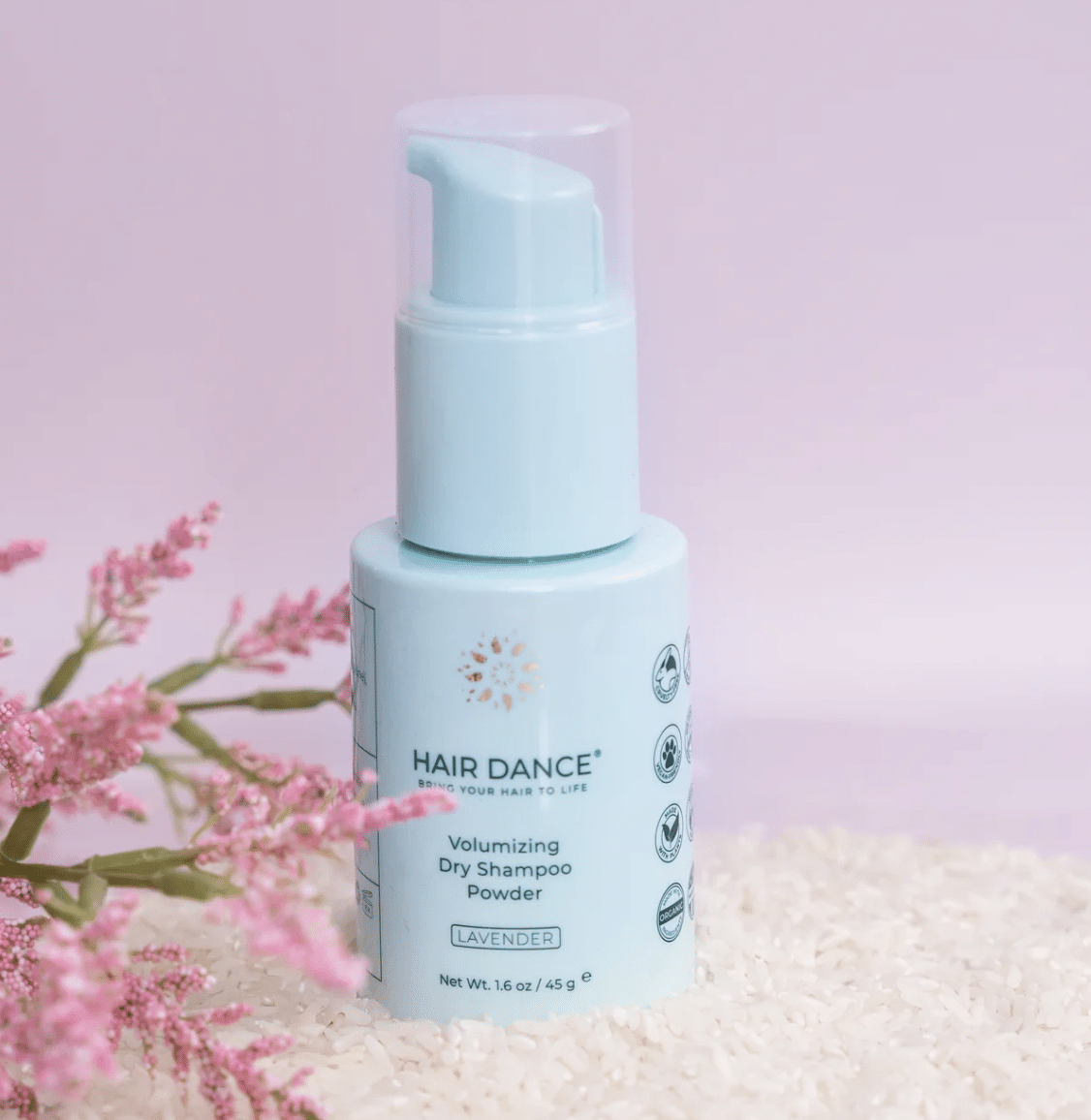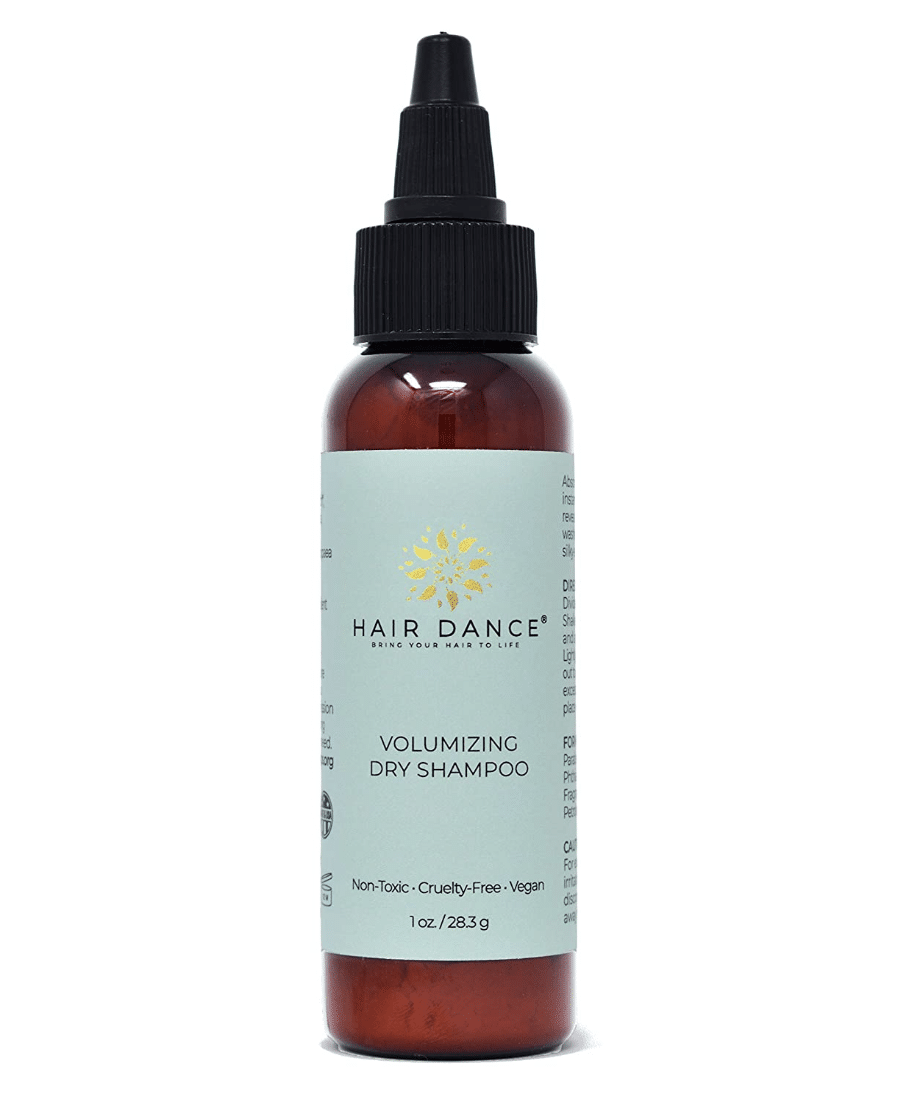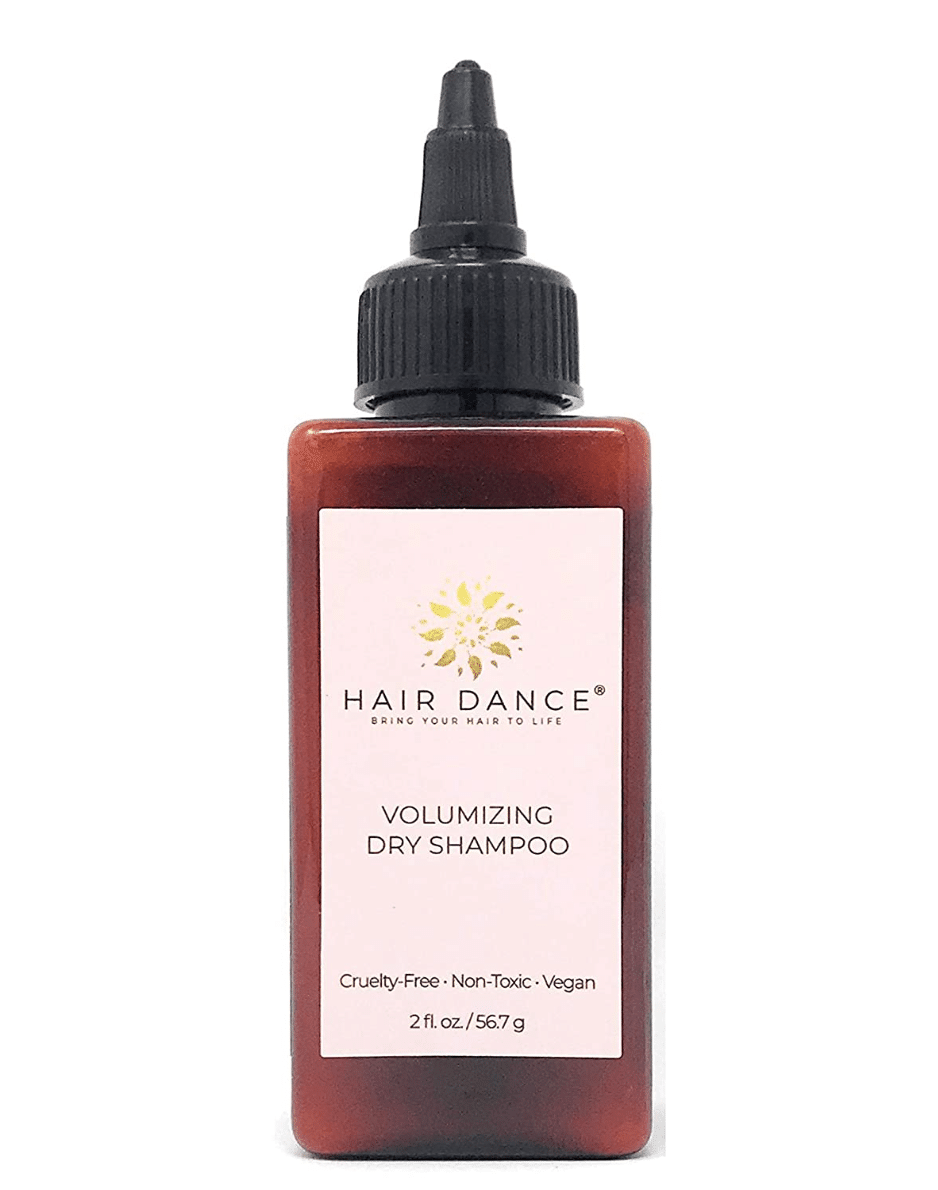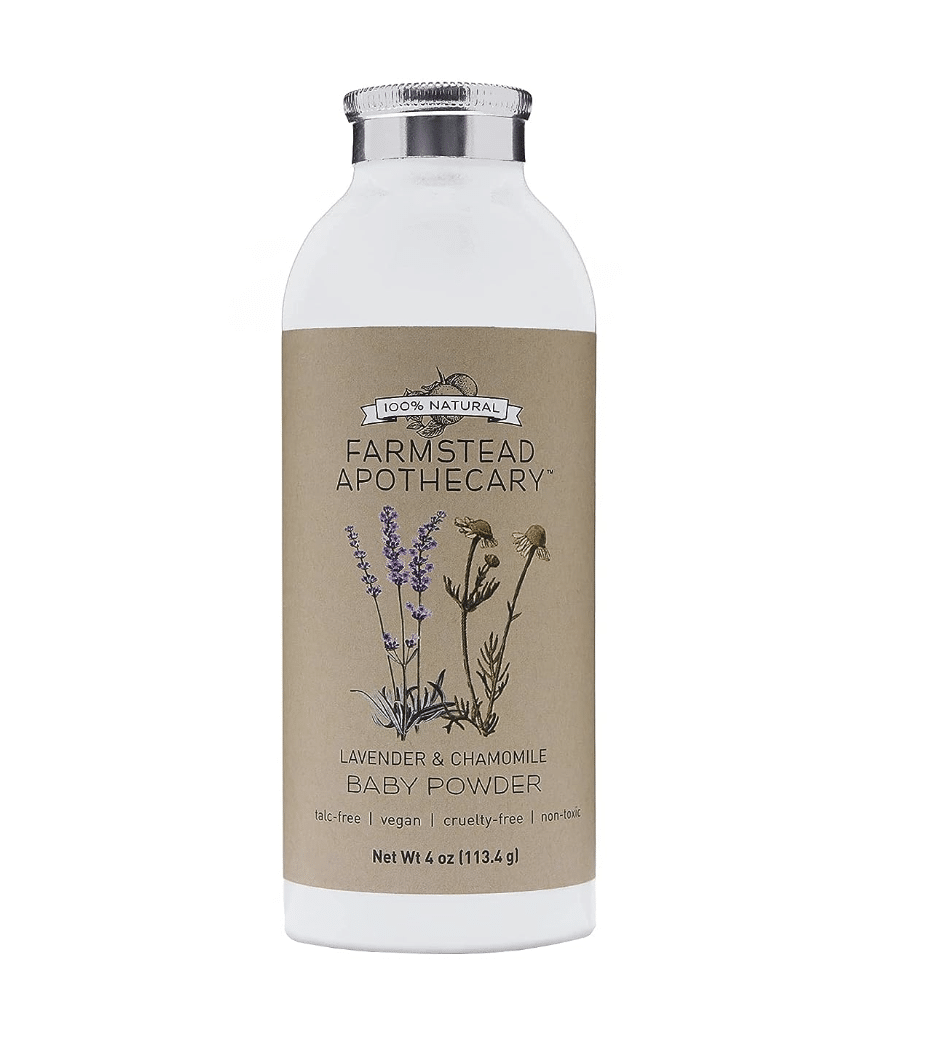Organic Dry Shampoo
🌿On this page, you will find the best organic dry shampoo on the market made without toxic ingredients such as talc or other toxic powder forms, or controversial ingredients such as clays, which contain heavy metals.
Conventional Dry Shampoo
Avoid Conventional dry shampoos which come in aerosol and contain toxic and polluting ingredients such as: Sulfates (SLS, SLES), Formaldehyde, Phthalates and Mineral Oils (Petroleum/Petrolatum), VOCS, LPG, Alcohol, Phenoxyethanol, Cetrimonium chloride, Siloxane, Silicones & Octamethylcyclotetrasiloxan, Parabens.
❌ Aerosol: Benzene, Butane, Propane, or Isobutane, which can be contaminated with butadiene, which is a known carcinogen.
❌ Fragrance: Avoid any products that contain undisclosed fragrances. One of the most toxic ingredients in cosmetics.
❌ Mica: Mica is linked to child labor, often it takes place in developing countries that may rely on exploitative practices. Plus mica can contain heavy metals and can have asbestos contamination. Synthetic mica: is a man-made mica, also called fluorphlogopite, or synthetic fluorine, made with colored yellow 10, blue 1, red 28, and many other fd&c food dyes that are derived from petroleum and banned in many countries due to potential links to cancer.
❌ Talcum powder: it is impossible to separate talc from asbestos
Greenwashing Dry Shampoo
Greenwashing is when a brand pretends to be organic, safe, clean, eco-friendly, or green when it is not. They will use misleading marketing tactics just to convince you to buy their products.
I don’t recommend clay-based dry shampoo, in vitro studies suggest that clays in general induce cytotoxicity (with dependence on the clay, concentration, experimental system, etc.) with different underlying mechanisms such as necrosis/apoptosis, oxidative stress, or genotoxicity.
Short-term effects include lung irritation. The most common are Kaolin Clay, Bentonite Clay, and Fuller Earth Clay. They are linked to respiratory toxicity
While many are claiming to be “clean dry shampoos” they still contain controversial ingredients such as:
❌ Kaolin Clay: The main constituent of Kaolin is Kaolinite. Kaolin clay can potentially be risky to the eyes, skin, stomach, and open wounds. CDC lists it as potentially toxic to inhalation, skin, and/or eye contact with these side effects: Chronic pulmonary fibrosis, and stomach granuloma. Kaolin Clay toxicity studies
Kaolinite can be dangerous to breathe in. In the U.S., the Occupational Safety and Health Administration (OSHA) has set the legal limit of kaolin exposure in the workplace as 15 mg/m3 total exposure and 5 mg/m3 respiratory exposure over an eight-hour workday.
Plus Kaolin is used as a pesticide and it is associated with lead and other heavy metals. Read here
❌ Bentonite Clay: Bentonite clay is a lung and eye irritant and depending on its source, it could contain toxins.
❌ White Clay: White clay is originally from China, on a hill called Kaoling. Heavy metal content and potential health risk of geophagic white clay.
❌ Fuller Earth Clay: Fuller Earth Clay Caution! May cause eye, skin, and respiratory tract irritation. The toxicological properties of this material have not been fully investigated.
Hazardous in case of eye contact (irritant), ingestion, or inhalation. Slightly hazardous in case of skin contact (irritant). Eye: May cause eye irritation. Skin: This may cause skin irritation. Ingestion: The toxicological properties of this substance have not been fully investigated. Inhalation: This may cause respiratory tract irritation. The toxicological properties of this substance have not been fully investigated
❌ Diatomaceous Earth: If breathed in, it can irritate the nose and nasal passages. If an extremely large amount is inhaled, people may cough and have shortness of breath. On the skin, Diatomaceous Earth can cause irritation and dryness. Diatomaceous earth may also irritate the eyes, due to its abrasive nature.
Organic Dry Shampoo
The best dry shampoos are made without clay and made with natural and safer ingredients such as:
-
✅ Organic rice starch
-
✅ Organic cornstarch
-
✅ Organic arrowroot powder
-
✅ Organic cocoa powder
How to use dry shampoo: Divide hair into sections. On dry hair, spray powder onto the roots or wherever volume is desired. Brush through or massage into the scalp with fingertips to reveal the look of refreshed and fuller-looking hair. Style as desired.
On this page, you will find the most organic and safest dry shampoos made with approved ingredients!
My number one recommendation is:
-
🌿Hair Dance Dry Shampoo. 10% off promo code: PRETTYORGANICGIRL.
-
Here if you want to get them on Amazon.
Shop with my links to support my research 💖
Hair Dance all Natural Dry Shampoo
💜 Hair Dance Dry Shampoo is my number one reocmedation. It is an all-organic dry shampoo made without controversial ingredients or clays.
Suitable for all hair colors, including dark or black hair.
Their bestselling Volumizing Dry Shampoo absorbs oil and residue, leaving hair refreshed and voluminous in between shampoo washes. Infused with a soothing natural scent, its aromatherapeutic Lavender essential oil helps calm your mood.
🌿Hair Dance Volumizing Dry Shampoo is a safer, more environmentally-conscious alternative to aerosol dry shampoo.
Its relaxing, natural Lavender scent soothes the senses for a peaceful calm.
Suitable for both on-the-go and at-home use, simply screw the lid on tightly and throw it in your gym bag, backpack, or purse for a quick and easy hair refresh!
INGREDIENTS: Organic Oryza Sativa (Rice) Starch, Organic Colloidal Oatmeal, Silica, Lavandula Angustifolia (Lavender) Oil Organic Olea Europaea (Olive) Leaf.
Hair Dance all Natural Dry Shampoo
🌿Hair Dance: a natural Dry Shampoo made without Clay finally! Vegan, Cruelty-Free, and eco-friendly ingredients. Made in the USA.
💜 Suitable for all hair colors, including dark or black hair, this bestselling Volumizing Dry Shampoo absorbs oil and residue, leaving hair refreshed and voluminous in between shampoo washes.
Infused with a soothing natural scent, its aromatherapeutic Lavender essential oil helps calm your mood.
💜 It is great when you need to refresh your hair between shampoo days. Also great to use after any work-outs, during camping, and while traveling. It absorbs excess oil and adds instant volume to any hairstyle.
It comes in a Lavender or Grapefruit Scent
💜 Application: Starting with the smallest amount, lightly tap on the bottle to disperse powder onto the hair roots and then gently rub in. Use a clean makeup brush or fingers. If needed, let it sit for several minutes and gently rub it in again.
INGREDIENTS: Organic Oryza Sativa (Rice) Starch, Organic Colloidal Oatmeal, Silica, Lavandula Angustifolia (Lavender) Oil Organic Olea Europaea (Olive) Leaf.
Hair Dance Volumizing Unscented Dry Shampoo
🌿Hair Dance: a natural Unscented Dry Shampoo made without Clay finally! Vegan, Cruelty-Free, and eco-friendly ingredients. Made in the USA.
Suitable for all hair colors, including dark or black hair, this bestselling Volumizing Dry Shampoo absorbs oil and residue, leaving hair refreshed and voluminous in between shampoo washes.
Hair Dance Volumizing Dry Shampoo is a safer, more environmentally-conscious alternative to aerosol dry shampoo made without all the controversial or greenwashing ingredients.
🌿Unscented: Perfect for those who are more sensitive, dealing with chemical sensitivities, reacting to essential oils, or those who prefer an odorless product!
Suitable for both on-the-go and at-home use, simply screw the lid on tightly and throw it in your gym bag, backpack, or purse for a quick and easy hair refresh!
INGREDIENTS: Organic Oryza Sativa (Rice) Starch, Organic Colloidal Oatmeal, Silica, Organic Olea Europaea (Olive) Leaf
Hair Dance Volumizing Dry Shampoo in Grapefruit
🌿Hair Dance: a natural Dry Shampoo made without Clay finally! Vegan, Cruelty-Free, and eco-friendly ingredients. Made in the USA.
Suitable for all hair colors, including dark or black hair, this bestselling Volumizing Dry Shampoo absorbs oil and residue, leaving hair refreshed and voluminous in between shampoo washes. Infused with an exhilarating natural scent, its aromatherapeutic Grapefruit essential oil helps uplift your mood.
Hair Dance Volumizing Dry Shampoo is a safer, more environmentally-conscious alternative to aerosol dry shampoo.
🌿Its mood-boosting Grapefruit scent invigorates the senses for a gorgeous morning or midday pick-me-up.
Suitable for both on-the-go and at-home use, simply screw the lid on tightly and throw it in your gym bag, backpack, or purse for a quick and easy hair refresh!
INGREDIENTS: Organic Oryza Sativa (Rice) Starch, Organic Colloidal Oatmeal, Silica, Grapefruit Essential Oil, Organic Olea Europaea (Olive) Leaf.
Rahua Organic Voluminous Spray
🌿 Rahua makes one of the only three USDA Certified Organic Voluminous Hair sprays on the market.
This organic hair refresher is a versatile, plant-based, alcohol-free volumizing spray that provides lift, light, tousled texture, and soft hold. Citrus juice extracts break down surface oils and revitalize hair and scalp while lavender and eucalyptus offer a fresh, natural aroma.
💕Use between washes or throughout the day to revive hair and keep the fresh.
-
Soft hold
-
Light, beachy texture
-
Refreshes hair and scalp
INGREDIENTS: Aqua, Citrus Medica Limonum (Lemon) Peel Extract*, Cymbopogon Schoenanthus (Lemongrass) Extract*, Zea Mays (Corn) Silk Extract *, Linum Usitatissimum (Linseed) Seed Extract*, Saccharum Officinarum (Sugar Cane)*, Lavandula Angustifolia (Lavender) Oil, Eucalyptus Globulus Leaf Oil (Limonene)*, Tabebuia Impetiginosa Bark Extract, Citric Acid, Sodium Chloride, Pyrus Malus (Apple) Pectin. * Denotes Certified Organic
Farmstead Apothecary Organic Baby Powder
🍃Farmstead Apothecary Organic Baby Powder is a luxurious baby powder. Made with soothing organic lavender, chamomile, and calendula, our all-natural and organic baby powder is talc-free and uses ultra-absorbent tapioca starch for extra comfort. Pure, gentle and non-toxic.
Farmstead Apothecary we keep it simple by using minimal, purposeful, and skin nourishing ingredients only
🍃 Perfect for use as a dry shampoo, body powder, and deodorant!
-
100% Plant based
-
100% Organic
-
Vegan
-
Talc-free
-
Clay-free
INGREDIENTS: Organic Tapioca Starch, Organic Chamomile Flowers, Organic CalendulaFlowers, Organic Lavender flowers powder
Not Recommended
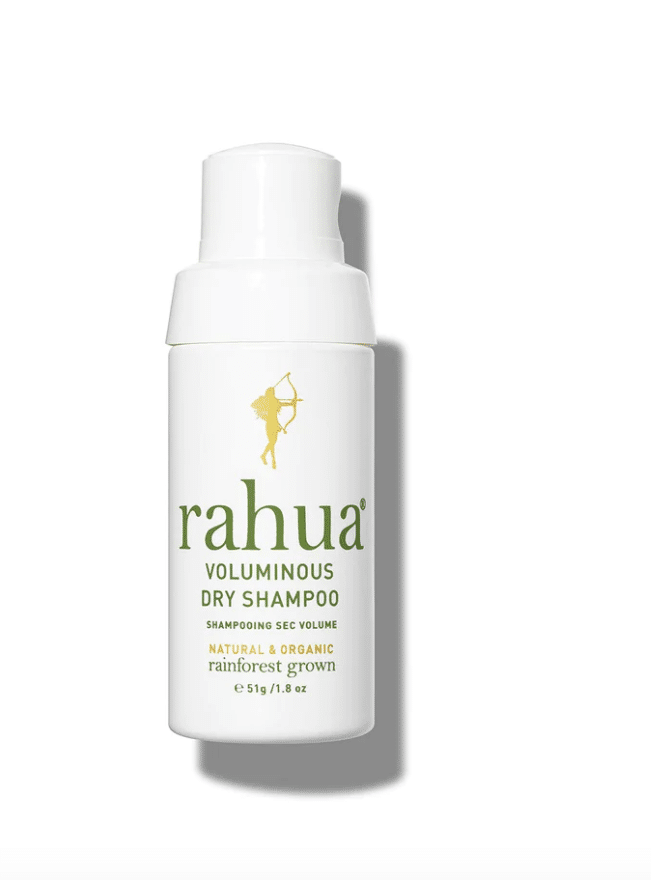
❌ Not recommended
I don't recommend Rahua Voluminous Dry Shampoo because it contains clay.
INGREDIENTS: Fuller Earth Clay, Organic Tapioca Starch, Star Anise, Vanilla Palnifollia, Citric Acid.
Fuller Earth Clay Caution! May cause eye, skin, and respiratory tract irritation. The toxicological properties of this material have not been fully investigated.
Hazardous in case of eye contact (irritant), of ingestion, of inhalation. Slightly hazardous in case of skin contact (irritant).
Eye: May cause eye irritation. Skin: May cause skin irritation. Ingestion: The toxicological properties of this substance have not been fully investigated. Inhalation: May cause respiratory tract irritation. The toxicological properties of this substance have not been fully investigated
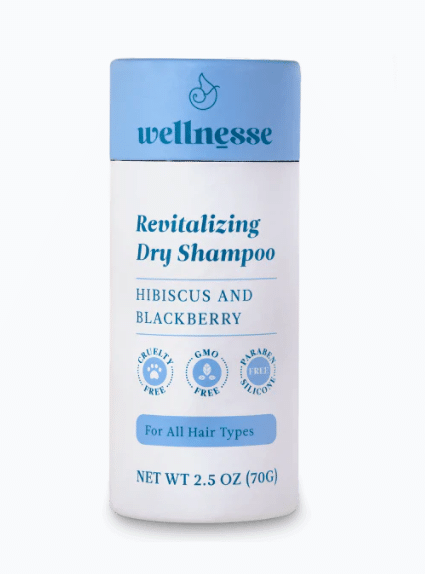
❌ Not recommended
I don't recommend Wellnesse Dry Shampoo because it contains Kalolin .
INGREDIENTS: Tapioca Starch, Zea Mays (Corn) Starch, Kaolin, Cereus Grandiflorus (Cactus) Flower Extract, Argania Spinosa (Argan) Kernel Oil, Hibiscus Sabdariffa Flower Extract, Rubus Fruticosus Fruit Extract, Lactobacillus Ferment, Lavandula Angustifolia (Lavender) Oil, Simmondsia Chinensis (Jojoba) Seed Oil, Maltodextrin
The main constituent of Kaolin is Kaolinite. Kaolin clay can potentially be risky to the eyes, skin, stomach, and open wounds.
CDC lists it as potentially toxic to inhalation, skin, and/or eye contact with these side effects: Chronic pulmonary fibrosis, stomach granuloma.
Kaolinite can be dangerous to breathe in. In the U.S., the Occupational Safety and Health Administration (OSHA) has set the legal limit of kaolin exposure in the workplace as 15 mg/m3 total exposure and 5 mg/m3 respiratory exposure over an eight-hour workday.
Plus Kaolin is used as a pesticide and it is associated with lead and other heavy metals. Read here
Also some review state: it leaves a flaky powder in their hair, It all clumped at scalp.
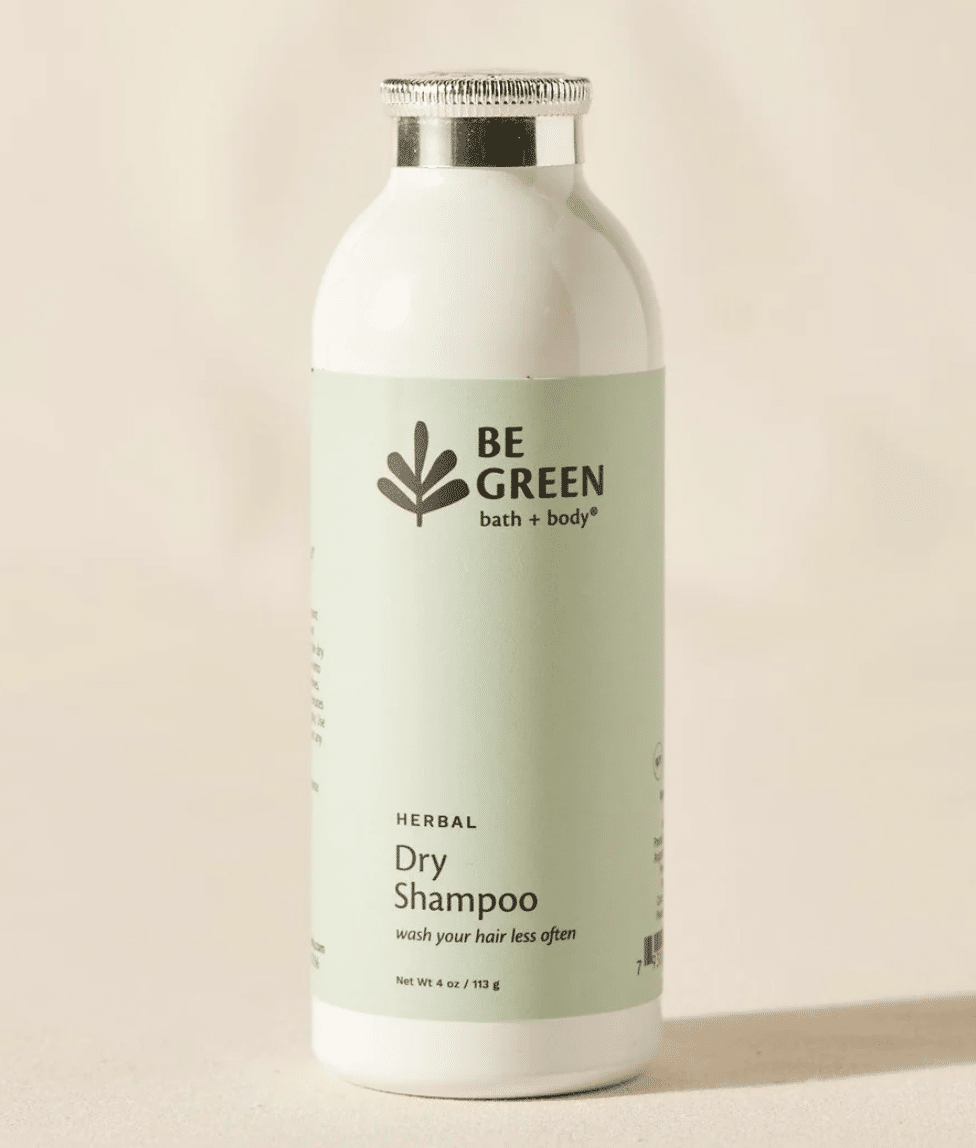
❌ Not recommended
I don't recommend Be green Dry Shampoo because it contains clay.
INGREDIENTS: Oryza Sativa (Rice) Starch*, Maranta Arundinacea (Arrowroot) Powder, Kaolin Clay, Lavandula Angustifolia (Lavender) Flower Powder*, Camellia Sinensis (Green Tea) Leaf Powder*, Carica Papaya (Papaya) Fruit Powder*. *organic ingredient
The main constituent of Kaolin is Kaolinite. Kaolin clay can potentially be risky to the eyes, skin, stomach, and open wounds.
CDC lists it as potentially toxic to inhalation, skin, and/or eye contact with these side effects: Chronic pulmonary fibrosis, stomach granuloma.
Kaolinite can be dangerous to breathe in. In the U.S., the Occupational Safety and Health Administration (OSHA) has set the legal limit of kaolin exposure in the workplace as 15 mg/m3 total exposure and 5 mg/m3 respiratory exposure over an eight-hour workday.
Plus Kaolin is used as a pesticide and it is associated with lead and other heavy metals. Read here
Also some review state: it leaves a flaky powder in their hair, It all clumped at scalp.
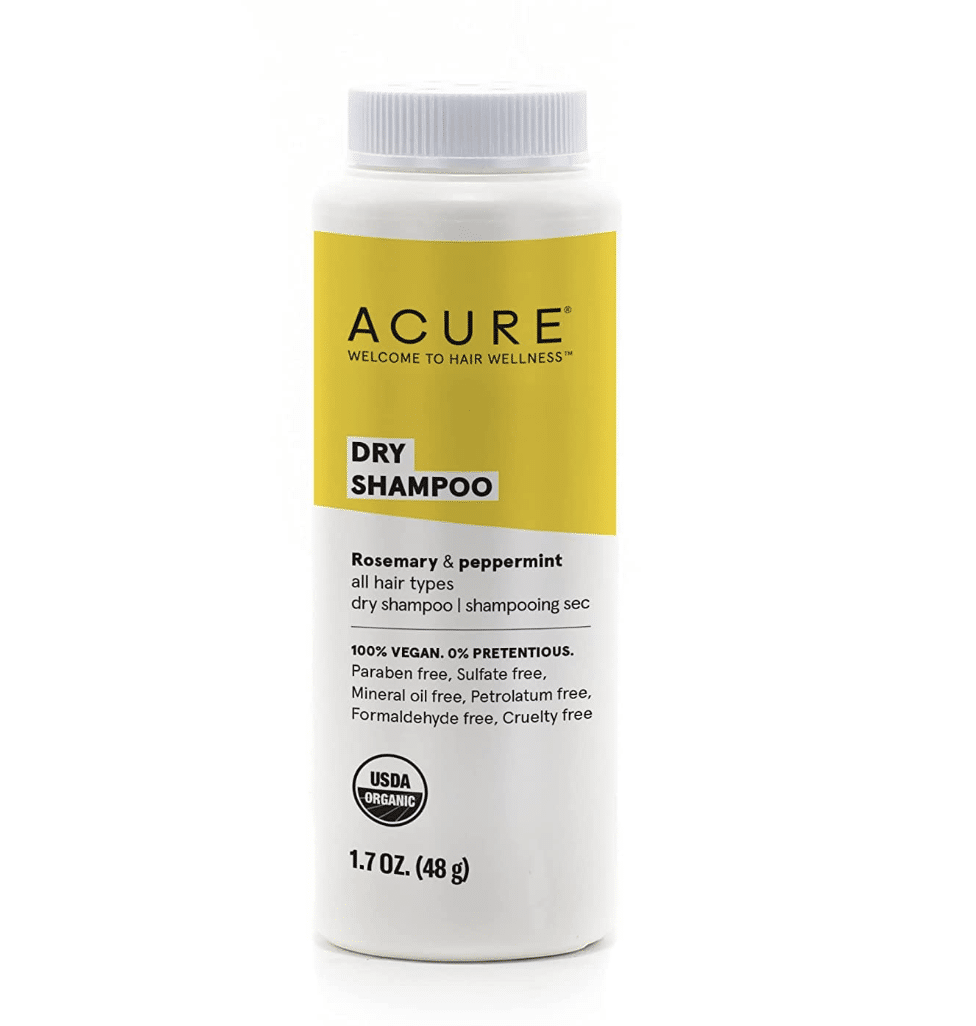
❌ Not recommended
Even though it is USDA Certified organic, I don't recommend Acure dry shampoo because it contains clay.
INGREDIENTS: zea mays (corn starch)*, maranta arundinacea (arrowroot) powder*, kaolin clay, sodium bicarbonate, rosmarinus officinalis (rosemary) oil*, mentha piperita (peppermint) oil*. *organic ingredient.
The main constituent of Kaolin is Kaolinite. Kaolin clay can potentially be risky to the eyes, skin, stomach, and open wounds.
CDC lists it as potentially toxic to inhalation, skin, and/or eye contact with these side effects: Chronic pulmonary fibrosis, stomach granuloma.
Kaolinite can be dangerous to breathe in. In the U.S., the Occupational Safety and Health Administration (OSHA) has set the legal limit of kaolin exposure in the workplace as 15 mg/m3 total exposure and 5 mg/m3 respiratory exposure over an eight-hour workday.
Plus Kaolin is used as a pesticide and it is associated with lead and other heavy metals. Read here
Also some review state: it leaves a flaky powder in their hair, It all clumped at scalp.
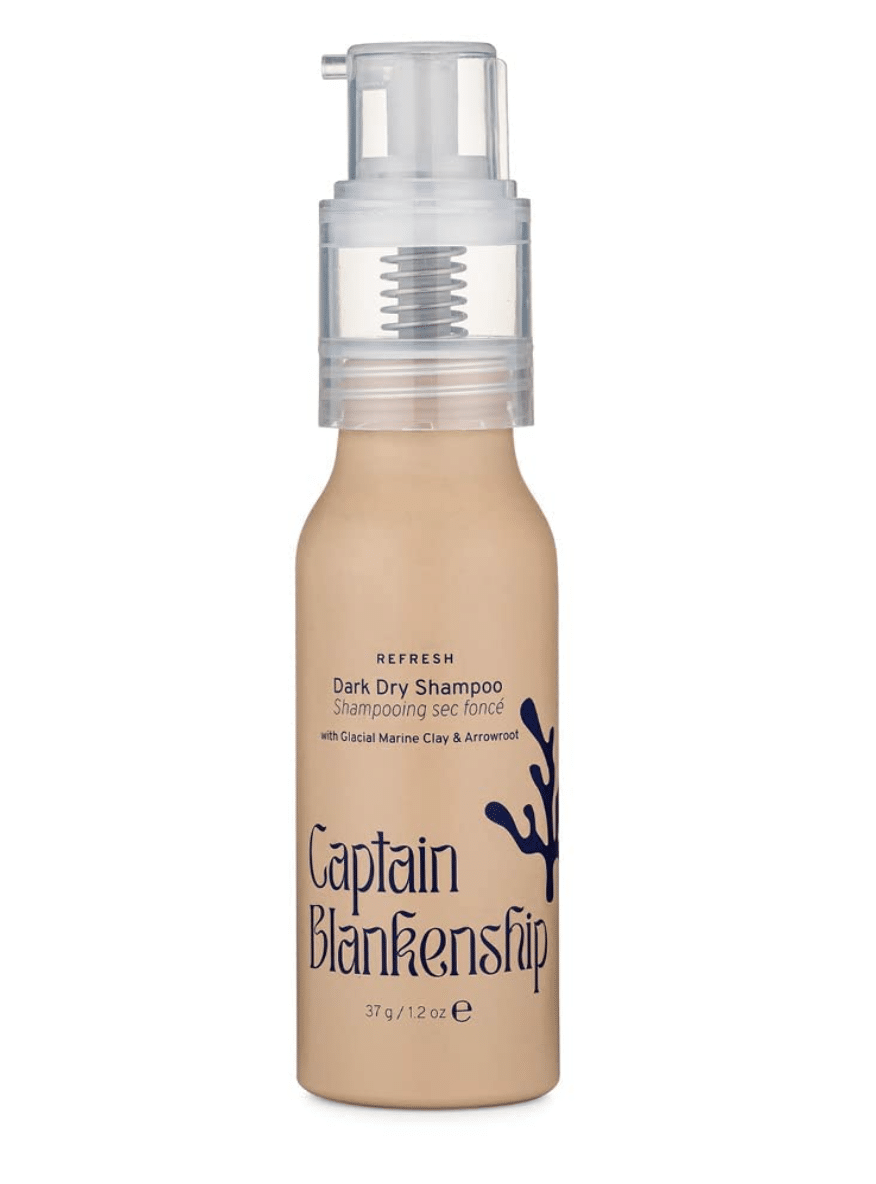
❌ Not recommended
I don't recommend Captain Blankenship Refresh Dry Shampoo Powder because it contains clay.
INGREDIENTS: Maranta Arundinaceae (Arrowroot) Powder,* Kaolin, Lactobacilius Ferment, Sodium Bicarbonate, Cymbopogon Martini (Palmarosa) Oil,*Pelargonium Graveolens (Rose Geranium) Oil.
The main constituent of Kaolin is Kaolinite. Kaolin clay can potentially be risky to the eyes, skin, stomach, and open wounds.
CDC lists it as potentially toxic to inhalation, skin, and/or eye contact with these side effects: Chronic pulmonary fibrosis, stomach granuloma.
Kaolinite can be dangerous to breathe in. In the U.S., the Occupational Safety and Health Administration (OSHA) has set the legal limit of kaolin exposure in the workplace as 15 mg/m3 total exposure and 5 mg/m3 respiratory exposure over an eight-hour workday.
Plus Kaolin is used as a pesticide and it is associated with lead and other heavy metals. Read here
Also some review state: it leaves a flaky powder in their hair, It all clumped at scalp.

❌ Not recommended
I don't recommend Beauty by Earth Dry Shampoo Powder because it contains clay.
INGREDIENTS: Maranta Arundinaceae (Arrowroot) Powder,* Kaolin, Lactobacilius Ferment, Sodium Bicarbonate, Cymbopogon Martini (Palmarosa) Oil,*Pelargonium Graveolens (Rose Geranium) Oil.
The main constituent of Kaolin is Kaolinite. Kaolin clay can potentially be risky to the eyes, skin, stomach, and open wounds.
CDC lists it as potentially toxic to inhalation, skin, and/or eye contact with these side effects: Chronic pulmonary fibrosis, stomach granuloma.
Kaolinite can be dangerous to breathe in. In the U.S., the Occupational Safety and Health Administration (OSHA) has set the legal limit of kaolin exposure in the workplace as 15 mg/m3 total exposure and 5 mg/m3 respiratory exposure over an eight-hour workday.
Plus Kaolin is used as a pesticide and it is associated with lead and other heavy metals. Read here
Also some review state: it leaves a flaky powder in their hair, It all clumped at scalp.

